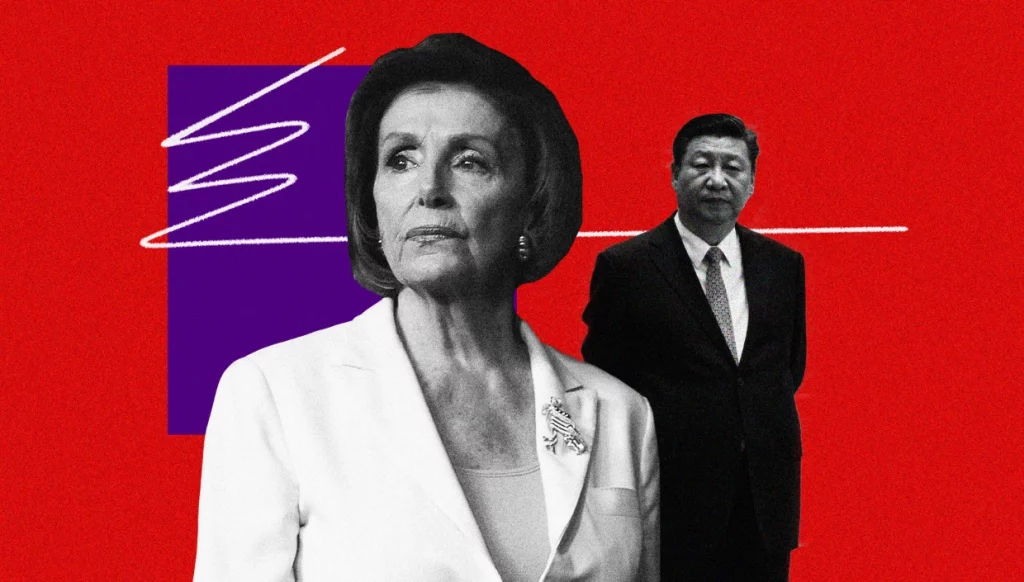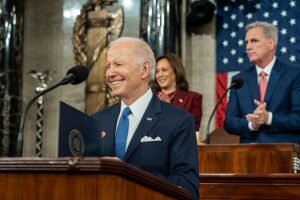A Fourth Taiwan Strait Crisis?
On August 4, 2022, the day following the official state visit by US House Speaker Nancy Pelosi to Taiwan, the People’s Republic of China (PRC) responded by conducting the largest military exercises ever staged by the People’s Liberation Army (PLA) in the Taiwan Strait.

Image Credit: Max Butterworth/NBC News
On Aug. 4, 2022, the day following the official state visit by US House Speaker Nancy Pelosi to Taiwan, the People’s Republic of China (PRC) responded by conducting the largest military exercises ever staged by the People’s Liberation Army (PLA) in the Taiwan Strait. In an unprecedented display of military power and aggression against Taiwan, the PLA launched 11 ballistic missiles into the waters around the island, raising concerns and speculation over the potential for hostile outbreaks and US intervention. According to NPR, PLA aircraft and naval vessels crossed the median line that divides the main island of Taiwan from mainland China and conducted military drills and maneuvers to rehearse the encirclement of Taiwan. CNN also reported that in addition to the drills, Beijing has canceled future phone calls between Chinese and US defense leaders, suspended bilateral climate talks, and sanctioned Pelosi and her immediate family. As reported by Axios, less than two weeks after Pelosi’s visit the PRC launched a fresh set of smaller-scale military exercises around the island following the unannounced visit of another US congressional delegation on Aug. 15.
The last time the PLA fired missiles into the waters around Taiwan was in 1996 in an event now known as the Third Taiwan Strait Crisis (1995-1996), when the PRC conducted provocative missile tests to try and influence Taiwan’s first direct presidential election. Back then, the Clinton administration established precedence for what has become the strategic assumption that has long lain at the core of Taiwan’s defense: that American military power will act as a deterrent against a Chinese invasion. In the biggest display of US military power in Asia since the Vietnam War, President Bill Clinton ordered naval battle groups to the Taiwan Strait and in the process sent Beijing a clear message to back down by forcing Chinese leadership to acknowledge its inability to stop US forces from coming to Taiwan’s aid.
As reported by Politico, the Reagan Carrier Strike Group, led by the flagship USS Ronald Reagan, was positioned in waters east of Taiwan in anticipation of the backlash from Pelosi’s visit. According to the White House, the aircraft carrier group will remain there to monitor the situation, with National Security Council spokesperson John Kirby stating that while the US does not seek a crisis, it will not be deterred from operating in the seas and the skies of the Western Pacific. Since 1979, US policy towards the Taiwan issue has been one of “strategic ambiguity” after the US abandoned their KMT allies in Taiwan in favor of bringing the PRC back into the fold of the international community. The US officially recognizes the “One China” policy but remains ambiguous on the matter. Washington has maintained unofficial diplomatic relations with Taipei via the Taiwan Relations Act of 1979, which authorizes the US to sell military hardware to Taiwan for defensive purposes, while still recognizing the PRC as the legitimate government of China.
Although news of the rapid buildup of the PLA’s naval forces has made recent headlines, with Chinese state media reporting that the PLA has activated more than 100 planes, including fighter jets and bombers, and over 10 warships, it bears remembering that military posturing is not indicative of actual capability. If anything, the modernization and buildup of the PLA in the past couple of decades reflect the assumption that the US is likely to come to the defense of Taiwan in the event of war. Though current Chinese leadership has been much more vocal and determined to achieve its sovereignty and identity aims than in the past, the US military continues to maintain a substantial lead in key capacities, such as nuclear weapons, combat aircraft, and aircraft carriers. Such a distinctive advantage, coupled with the fact that the US alliance network in the region exceeds China’s in terms of partner or ally capability, means that the US military might, especially its unrivaled naval power, remains a strong deterrent against the PLA in the Taiwan Strait. This is especially true following the ramping up of tensions with Japan, which lodged a formal protest with China and issued a public condemnation after five ballistic missiles landed near islands within Japan’s exclusive economic zone, according to Japan’s Defense Ministry and reported by CNN. Furthermore, with the presence of the USS Ronald Reagan, the PLA will be wary of the prospect of accidentally firing upon a US naval vessel in international waters. If they did, it may repeat the Gulf of Tonkin incident, when the USS Maddox was attacked by North Vietnamese forces in August 1964 and led to the Gulf of Tonkin Resolution, which served as legal justification for the Johnson administration to authorize the deployment of US troops and the commencement of open warfare against North Vietnam.
The current situation regarding Taiwan amounts to nothing more than saber-rattling, with the likelihood of actual conflict occurring being highly improbable. The PRC will not lightly risk provoking the US or having the US military back Taiwan. There are already inherent difficulties in launching an amphibious invasion of a well-defended island like Taiwan, never mind the logistical nightmare of fighting simultaneously against a well-trained and well-armed resistance and the world’s foremost military power.
Konrad Lee (he/him) is a second year MA student in International Relations at NYU. Having received a BA in Government and History from Wesleyan University, he worked for a year as an analyst for an investment firm before deciding to pursue his passion and interests by studying IR at the graduate level, with a specific focus on the Asia-Pacific region and US-China relations. He hopes to be able to work long term in the field of research and policy analysis. In his free time (drastically limited by his impending thesis), you can find him at 404 Fitness or taking his dog out for adventures in the city.








